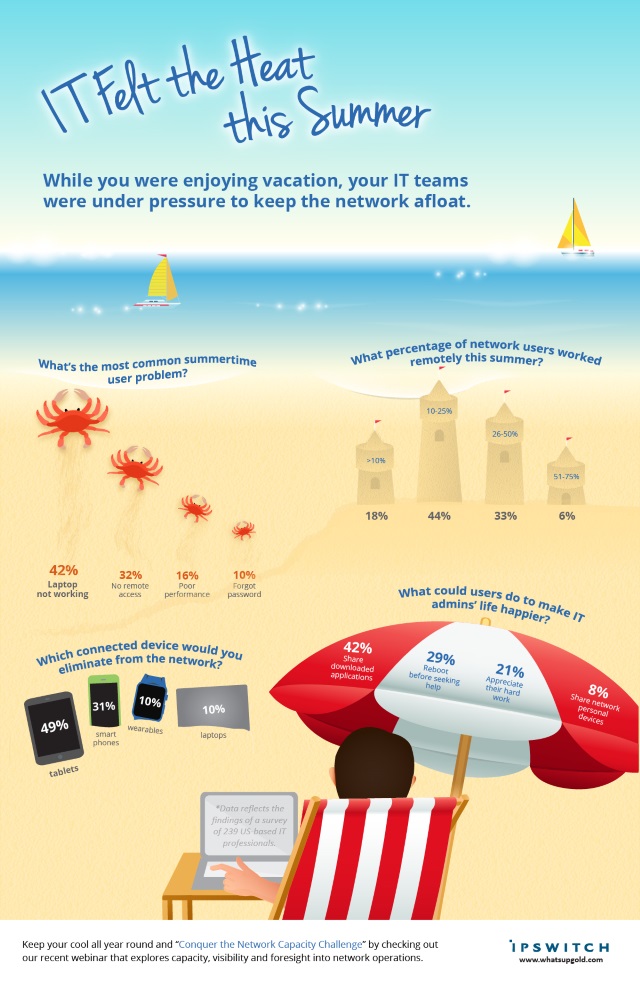
During the summer months, many organizations see a significant expansion in the number of remote workers, which can make the job of network managers or system admins more difficult.
Software company Ipswitch recently polled 239 IT professionals in the United States to identify the issues that most affect them over the summer.
A third of all survey respondents saw nearly half of their colleagues working remotely during the summer. Malfunctioning laptops were named as the top problem by 42 percent, followed by network connectivity issues (32 percent) and poor application performance (16 percent).
Wireless devices were named as a problem too. When asked what type of device they'd like to see eliminated from use on the corporate network, 49 percent of all IT pros surveyed chose tablets, followed by smartphones at 31 percent. Only 10 percent named wearable technology which may be due to relatively small size of the market at the moment.
When asked what employees could do to reduce the load on IT staff, 42 percent said eliminating the shadow IT effect, when employees download apps without telling or seeking permission. Nearly one third (29 percent) said they'd most appreciate if an employee rebooted their computer before seeking assistance. In order to feel more empowered at work, 32 percent of IT professionals would like the ability to choose and buy technology, while 25 percent wanted to have X-ray vision to figure out the source of problems.
"The summer months are a busy time for IT pros as employees expect continuous unfettered access to company networks while working from home or on vacation. A single organization can find itself with a significant bump in remote workers, all of whom may need support and assistance", says Jeff Loeb, Chief Marketing Officer at Ipswitch. "A unified network and server performance monitoring solution will help IT pros to solve network issues before they affect employees, wherever they are working".
The full report is available from the Ipswitch website and there's a summary of the findings as an infographic below.

Image Credit: Creative Images / Shutterstock

